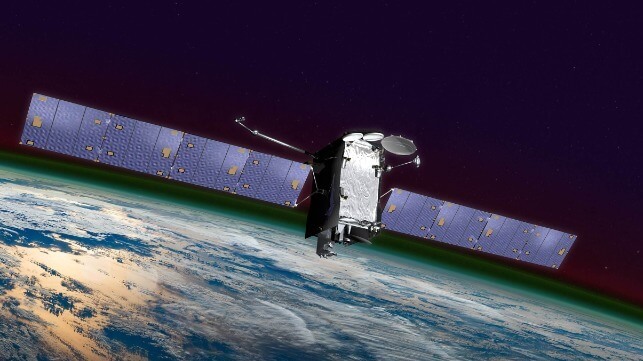SPACE
NI teens create life-sized replica of Star Wars droid R2D2
Logan Hamilton, Sean Boyle (ScreenWorks), James O’Neill, Nathan Loughlin, David McConnell (Northern Ireland Screen), Beth Nihell and Jodie Bingham with the R2D2 droid outside Belfast City Hall
Christopher Leebody
Twelve Northern Irish teenagers have successfully built a life-size version of the Star Wars droid R2D2 in just five days.
Creating the fully-functioning version of the droid in time for Star Wars Day on Saturday — May the Fourth — the teenagers used more than 1,000 parts which were either created on a 3D printer, made of plywood or sourced from suppliers around the world.
Like the droid which made his debut in the 1977 blockbuster, the teenagers’ creation makes sounds and lights up just like the original.
The project was created through Into Film’s ScreenWorks supported by Northern Ireland Screen, with the new R2D2 making his debut at Belfast City Hall on Tuesday.
The droid will be visiting schools and careers fairs to promote ScreenWorks, a work experience scheme that gives young people unparalleled access to industry professionals across all five screen sectors — film, television, animation, gaming and visual effects.
Many of the young people behind the creation of the Northern Irish R2D2 plan to go on to careers in the film industry.
Beth Nihell (17) from Bangor plans to study film at Ulster University next year and said: “It was a real team effort to create something like this together in just five days. I’m hoping for a career in props or the art department so this was really helpful to give me real-life experience in the industry.”
And 15-year-old Nathan Loughlin from Belfast, who is studying GCSE Moving Image Arts at St Mary’s Christian Brothers, added that he liked the hands-on approach of the workshop.
“It was amazing to see everything come together in the end. All these parts that we had created, primed, painted were put together to build this amazing R2D2,” he said.
ScreenWorks lead Sean Boyle added: “In the words of Yoda: ‘Do. Or do not. There is no try’. We had this idea to do something amazing that would capture the imagination of the young people for this prop workshop and show them what was possible right here at home.”
“With the screen industries growing in NI, you don’t have to go to Hollywood to create something amazing.”
The prop workshop was held at Temple Props in Templepatrick under the guidance of industry experts Denis Rush and Victoria Arundell who have more than 20 years’ experience in the industry.
“These young people were totally amazing. They had such enthusiasm, creativity and talent. It was an honour for us to work with this next generation” said Victoria Arundell from Temple Props.
In addition to the support of the master prop builders, Into Film also had advice from leading Star Wars droid builder Lee Towersey from England who started his career as a hobbyist and went on to work for Lucas Films.
Into Film’s ScreenWorks programme, which is free to all participants, has been supported by NI Screen since the project started in 2018.
David McConnell, head of education at Northern Ireland Screen, said: “The ScreenWorks programme is a real success story and has grown exponentially, offering young people varied and exciting work experiences with leading industry experts in all facets of the screen industry.
“Its aim is to create a pathway where children can learn from a very young age about potential careers in this growing industry.”
Scientists are getting closer to understanding the sun’s ‘campfire’ flares
Magnetic cancellation is thought to underpin the diminutive solar phenomenon

This false-color ultraviolet image of the sun is one of many from the European Space Agency’s Solar Orbiter probe that is helping researchers unravel the mystery of tiny “campfire” flares, diminutive outbursts on the solar surface.
EUI TEAM/SOLAR ORBITER/ESA AND NASA, CSL, IAS, MPS, WRC/PMOD, ROB, MSSL/UCL
By Adam Mann
DALLAS — Scientists are starting to figure out what causes tiny eruptions on the sun called campfire flares.
Campfires were discovered in 2020, when the European Space Agency’s Solar Orbiter probe snapped closeup photos of our parent star and spotted diminutive flickers of ultraviolet light (SN: 7/16/20). The flashes resemble more massive explosions such as solar flares and coronal mass ejections but are only a millionth or a billionth the size.
Using observations of 52 campfires, solar physicist Navdeep Panesar and her colleagues tracked these bursts from their beginnings. The team noticed that nearly 80 percent of the campfires were preceded by a dark structure made from cool plasma, Panesar reported April 9 at the Triennial Earth-Sun Summit.
“When this cool plasma rises, a brightening appears underneath it. That brightening turns into a campfire,” says Panesar, of Lockheed Martin Solar and Astrophysics Laboratory in Palo Alto, Calif.

Such cool plasma structures also precede coronal jets, another of the sun’s recurring explosions. The findings suggest these plasma structures are more common than previously believed, Panesar says, and that many solar eruptions — campfires, jets, flares and mass ejections — arise in a similar fashion.
Flares and mass ejections occur when magnetic fields of opposite polarities get tangled and cancel one another out, leading to a powerful release of energy. Campfires are believed to be produced via similar mechanisms, though a full understanding has so far eluded researchers.
Since campfires tend to be between half a million and 2.5 million degrees Celsius, they are thought to help heat the sun’s million-degree atmosphere, the corona. Understanding why the corona is so much hotter than the sun’s surface, which is a mere 5500° C, has been a longstanding problem for solar physicists (SN: 2/27/20).
CITATIONS
N.K. Panesar et al. The magnetic origin of solar campfires: observations by Solar Orbiter and SDO. Triennial Earth-Sun Summit, Dallas, April 9, 2024.
About Adam Mann
UK Space Command and Jon Egging Trust sign collaboration pledge

The branch of the MOD which represents the UK’s interests in space, UK Space Command, and STEM-inspired youth charity the Jon Egging Trust (JET), have today signed a memorandum of understanding aimed at broadening access to space for young people from disadvantaged backgrounds.
The MOU was signed at UK Space Command’s headquarters at RAF High Wycombe, Buckinghamshire, by JET CEO, Dr Emma Egging, and Commander of UK Space Command, Air Vice-Marshal Paul Godfrey. The MOU signifies the start of a collaboration between the two organisations and pledges: “to work towards the betterment of the community through providing inspiring engagement opportunities for young people across the UK.”
JET and UK Space Command are currently co-designing a series of space-related sessions which will be delivered within JET’s existing three-year Blue Skies programme from September 2024. Blue Skies develops teamwork, leadership and employability skills in under-confident students living in areas of high deprivation, and uses STEM and space environments as a springboard for inspiration. Students alternate between in-school sessions which boost confidence and resilience, and workplace visits which broaden horizons and aspirations and introduce students to careers which they may never have considered or have considered out of reach. The co-designed space sessions will be plugged into the existing Blue Skies framework and are aimed at inspiring students to think more deeply about what space means to them, and how it impacts their day-to-day lives.
JET CEO, Dr Emma Egging, says that the partnership with UK Space Command builds on twelve years of support from the RAF, and will help to deliver the charity’s vision that every JET student should have access to space opportunities as part of their Blue Skies journey.
“Space touches every aspect of modern life, and yet so often people see it as an abstract concept which doesn’t relate to them,” says Emma. “By working with UK Space Command to build inspiring space-related content and workplace opportunities into our programmes, our students are able to gain an understanding of what space means for them, grow their confidence and aspirations, develop vital competencies including teamwork and communication skills, and get a real sense of the breadth of career opportunities available within the sector.”
AVM Godfrey says: “Space technology enables and underpins our daily lives, while the UK space sector employs nearly 50,000 people of all skillsets, backgrounds, and experience. Through this joint venture, UK Space Command and the Jon Egging Trust will demonstrate to thousands of young people that space really does matter, and everyone can be involved.”
SES Reaches Agreement to Buy Intelsat

The EU-based satellite corporation SES has reached a deal to acquire American competitor Intelsat - the market leader in maritime VSAT - for $3.1 billion. The agreement is the latest in a growing wave of M&A activity in satcom, as incumbent providers reach for scale to counter new entrants in the sector.
In the near term, SES and Intelsat expect to save $2.6 billion from "readily creatable" synergies from the merger. In the longer term, the combined firm will be well-placed to compete in high-growth segments of the market, Intelsat said.
"In a fast-moving and competitive satellite communication industry, this transaction expands our multi-orbit space network, spectrum portfolio, ground infrastructure around the world, go-to-market capabilities, managed service solutions, and financial profile," said SES CEO Adel Al-Saleh.
For Intelsat, the acquisition is a vindication of a long-term turnaround strategy, including its passage through bankruptcy in 2021-22. The bankruptcy process cut the company's debt by more than half, from about $16 billion to $7 billion, and injected $7 billion in new financing. The firm emerged with new owners and new top executives, who have reversed its fortunes over the past two years.
About three-quarters of Intelsat's shareholders have already approved the deal, as well as the boards of both companies. The merger will require regulatory approval, which is expected in the second half of next year.
Price and service-speed pressures from SpaceX's Starlink system have forced most satcom players to adjust to a new reality, and consolidation through M&A is one adaptation. Other recent deals include Eutelsat's purchase of OneWeb, SES' purchase of O3b, and Viasat's acquisition of Inmarsat.
Starlink is a first mover in the low earth orbit (LEO) broadband service category, with a constellation of 5,000 satellites and growing. Its constellation's proximity to Earth reduces latency, the delay time for transmission, which matters for interactive tasks like videoconferencing or remote control. Its cost structure is comparatively low and service speeds are high, and it is gaining acceptance for crewmember and passenger connectivity applications.
Multiple new competitors will likely enter the LEO field in short order, including China's GuoWang and Amazon's Project Kuiper. Both plan to launch new constellations numbering in the thousands of satellites.
No comments:
Post a Comment